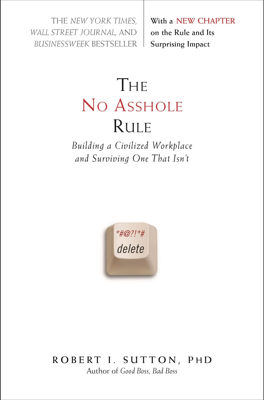When Assholes Reign: Tips for Surviving Nasty People and Workplaces
Surviving Nasty People and Workplaces
The Prevalence and Impact of Toxic Workplaces
Millions of people feel trapped in workplaces where toxic behavior dominates, leading to high turnover rates. Research indicates 25% of bullying victims and 20% of witnesses leave their jobs, although financial constraints often force others to stay.
Coping Strategies
Reframing: Changing how you interpret demeaning behavior can reduce its emotional impact. Techniques include avoiding self-blame, expecting the worst while hoping for the best, and developing emotional detachment.
Emotional Detachment: - Passion vs. Indifference: Passion is overrated in toxic environments. Indifference can preserve mental health when facing constant demeaning behavior. - Detached Concern: Blending compassion with emotional distance can help avoid burnout, especially in helping professions.
Small Wins: - Sense of Control: Gaining control over small actions helps reduce feelings of helplessness. - Examples: Break tasks into manageable steps, engage in supportive interactions, and teach others coping strategies.
Limit Exposure: - Avoidance: Schedule short meetings, use telephone conferences, or work with email to reduce face-to-face interactions with toxic individuals. - Build Safe Spaces: Seek out supportive environments and networks to buffer against negativity.
Fight and Win Small Battles: - Gentle Reeducation: Calmly explain your situation to help aggressors understand your perspective. - Measured Confrontation: Carefully choose moments to stand up to bullies, exact revenge, or call their bluff.
Real-world Examples
Ruth's Strategy: Inspired by a river rafting guide's advice to "float with your feet out in front," Ruth adopted a mindset of floating through meetings with toxic colleagues, helping her remain emotionally detached and resilient. She shared her strategy with a fellow executive, creating a support system.
Disney's Approach: Disney trains employees to deal with irate guests by promoting empathy for the guests’ situations and maintaining positivity to ensure negative encounters don’t ruin their day.
Potential Risks
False Sense of Protection: These strategies might provide just enough relief to prevent individuals from leaving truly harmful environments when they have the option. The case of Jerrold, who endures extreme abuse from a toxic boss, illustrates the danger of becoming too adept at enduring toxic behavior.
Conclusion
Adopting reframing techniques, seeking small wins, practicing emotional detachment, and building supportive networks can help individuals survive toxic workplaces. However, it's crucial to recognize when it's time to leave an unbearable environment, despite these coping strategies.
